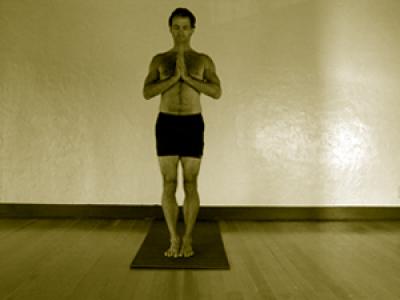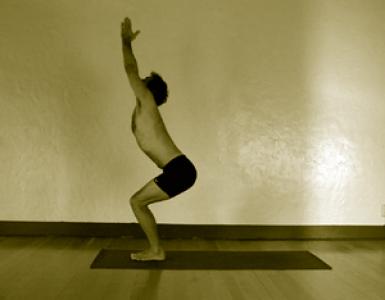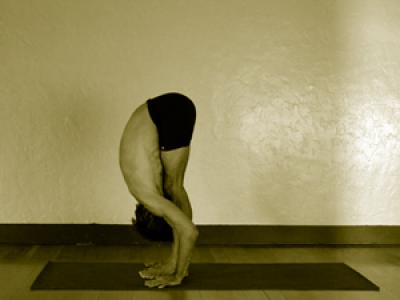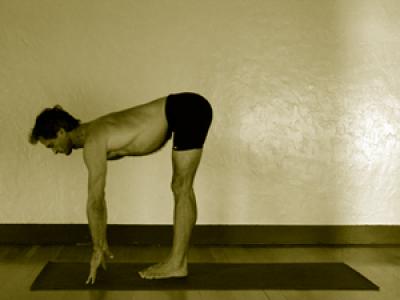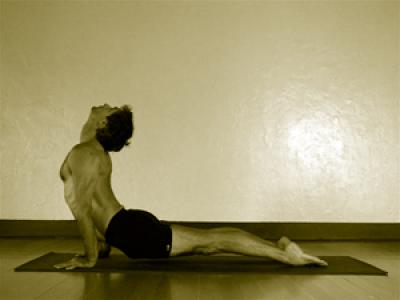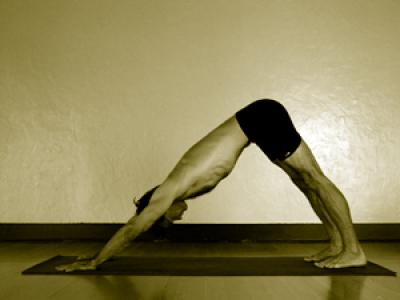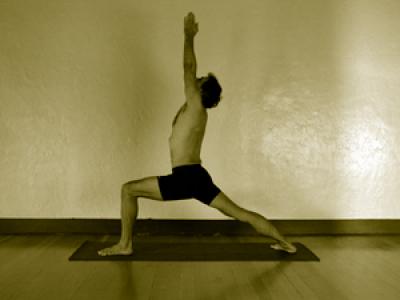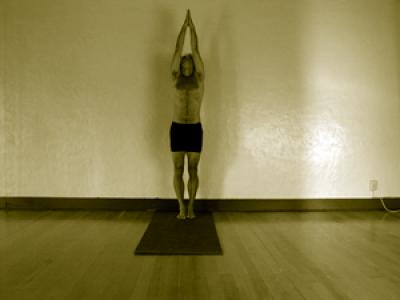Surya Namaskara B (Sun Salutation B)
- The initiating inhale brings you into Utkatansana from Tadasama (I like to move from Anjali Mudra – palms together at the heart). Consider the option of gazing down or toward the horizon rather than up as a way to reduce potential strain in the neck in this movement.
- New students who are unstable in Tadasana or have very tight hips can practice this movement into Utkatasana with the feet and knees hip distance apart.
- Students with tight shoulders: keep your arms parallel rather than drawing your palms together overhead in Utkatasana.
- In practicing the first Utkatasana, place your hands into the creases of the groins and push the femoral heads toward the heels while extending long through the spine while trying to find a sense of pelvic neutrality relative to the spine
- In transitioning from Adho Mukha Svanasana to Virabhadrasana I, consider first instructing Plank Pose as a way of introducing high lunge poses and offering a space in which to gently awaken the hip flexors and groin while ensuring that students understand the very important alignment principle of knee-over-heel.
- In the first Virabhadrasana I, straighten your front leg, place your hands on your hips, and feel the internal rotation of the back leg as coming from your back foot. • Explore the movement of squaring the hips toward the front and resisting the anterior tilting of the pelvis when bending the front leg into the asana.
- In extending the arms overhead in Virabhadrasana I, soften your floating ribs in as a way to help develop greater shoulder flexion and prevent compression in the low back.
- In the transition from Virabhadrasana I to Chataranga Dandasana, keep the movement simple, fluid and connected to your breath. You will observe many students, especially beginning students who have been seduced by “power yoga” techniques, keeping one foot off the floor all the way into and even through Chataranga Dandasana. This compromises the stable foundation of Chataranga Dandasana; done repetitively, it will destabilize the sacro-iliac joint and lead to potentially chronic problems in the low back. Remember: Chataranga is an asana
